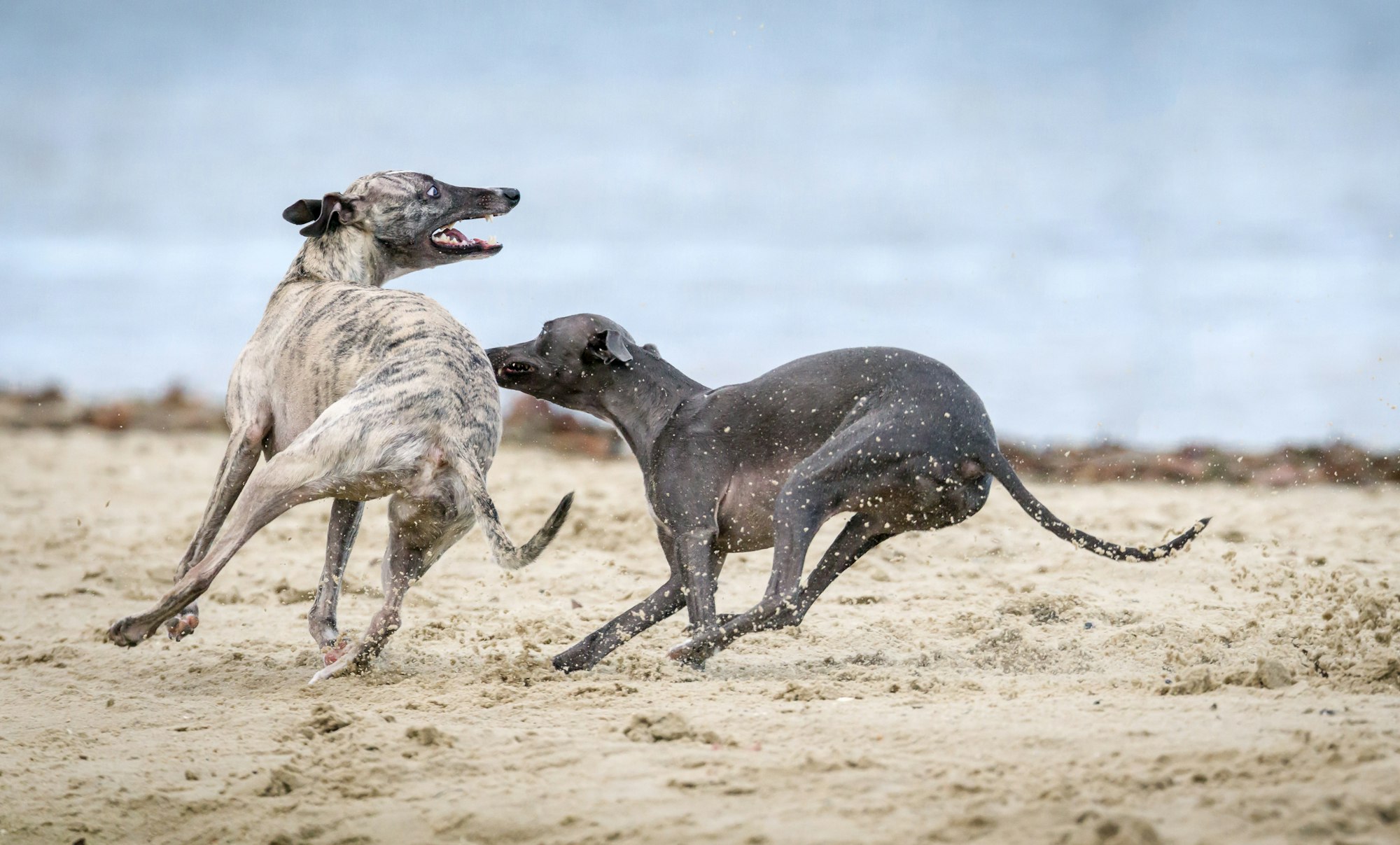It’s pretty hilarious watching a dog chase its own tail. They look so funny running around and around in circles trying to get close enough to that elusive tail to grab ahold of it.
Sometimes they don’t notice walls or items in the way and trip over them or bump their heads, which is just as funny. As long as they don’t hurt themselves, of course.

But have you ever stopped to wonder why dogs chase their tails? Though funny, it does seem to be pointless behavior and while dogs can act goofy sometimes (okay most of the time) they usually have a reason. Even if the reason is simply that they're having fun.
So what’s the reason for chasing their tails? Is it nothing more than cute behavior you can laugh at — or should you be worried? Let’s find out!

Reasons Dogs Chase Their Tails
There are a few reasons that your dog might be chasing his tail. Some of them are nothing to worry about. Your dog is just being a dog and chasing his tail is one way of entertaining himself.
However, there are some other, more concerning reasons as well. Let’s learn about the top reasons here to help you figure out if your dog’s tail-chasing habit is just for fun or cause for alarm.

Boredom
Some dogs are simply bored and chasing their tail seems like a good way to pass the time. The action is a good way to release energy and pent-up frustration. It’s also good exercise, though your dog probably doesn’t think of it that way. They just feel better after they work out the wiggles.
But what if your dog is chasing his tail constantly? If boredom is the reason, you still need to take note. Your dog isn’t getting enough mental stimulation or exercise, which will start to affect his mental and physical health negatively if you don’t change these habits.
Try taking him more frequently on walks and runs or to the dog park to play fetch. Make sure he has mentally stimulating toys to play with while you’re at work or any other time you’ll be gone for a while.
Curiosity
Another reason for this comical behavior is curiosity. This cause is typically age-related and almost all young puppies will go through a tail-chasing phase.
Imagine being an ungainly puppy. You’re still figuring out your body parts and how to use them in a coordinated manner. And then there’s this thing that waves around and follows you everywhere you go.
What puppy wouldn’t turn around and try to catch it? If this is the reason for your pup’s behavior, it should be a passing phase. As your dog becomes more aware of his body, his curiosity about his tail will diminish and the behavior will pretty much disappear.
Genetics
Some dogs are simply more prone to chasing their tails than others. This is likely due to a combination of genetic and environmental factors.
Interestingly, this study found significant cholesterol differences between dogs that chase their tails and dogs that don’t. This finding may also indicate a genetic component.
Parasites
Parasites can cause a lot of problems for dogs, including making them chase their tails.
Parasites are tiny creatures that live off of other animals. They can live inside the dog's body or on the outside. Some parasites can cause the dog to itch and scratch. Other parasites can cause the dog to lose hair, have diarrhea, and vomit.
Tail chasing usually happens because the dog’s rear end is itchy. Intestinal parasites like tapeworms, fleas, or even food allergies are all reasons for your dog to feel itchy.
If you think your dog may have a parasite, it is important to take him to the vet. The vet can prescribe medication to help get rid of the parasite and ease your dog’s discomfort.
Medical Condition
If your dog suddenly takes up tail chasing quite frequently, this could indicate a medical problem.
It could be something as simple as impacted anal glands which can easily be taken care of with a quick trip to the vet. It could also be something more serious such as neurological problems.
Regardless, if you suspect a medical issue is the cause of your pup’s funny behavior, a trip to the vet should be high on your to-do list.

When Tail Chasing Takes a Turn for the Worst
As we’ve seen, there are various reasons that your dog might be chasing their tail. Not all of them are cause for concern.
However, some of them are medical problems
Tail chasing generally becomes a problem when it starts to interfere with a dog's quality of life. What if your dog is chasing its tail so much that it is not able to eat or sleep, or is starting to hurt itself?
The majority of dogs will not exhibit behavior this extreme. But if this is your pet, then it is time to seek help from a veterinarian or animal behaviorist.
There are a number of possible treatments for tail chasing, including medication, changes in the home environment, and behavior modification techniques. Your vet will recommend a treatment, or a combination of treatments, depending on the root cause of your dog’s behavior.
Sometimes the cause isn’t overtly obvious. So you’ll be asked to try a treatment for a period of time to see if it has an effect. It may take a bit of trial and error but hopefully, you’ll start to see improvements.

Compulsive Behavior
What if there don’t seem to be any physical underlying causes? Your vet may be unable to find a medical issue and the treatments you’ve tried don’t seem to be working.
Your dog’s mental rather than physical health could be the culprit. Like people, dogs can develop compulsive behaviors stemming from Obsessive Compulsive Disorder (OCD).
Just as a person may bite their nails obsessively, a dog bites or chases their tail. Perhaps they feel overly nervous about a visit from a new person or animal or another exciting event in their little doggy life. Or perhaps they just find the action soothing

Regardless, some dogs engage in this compulsive behavior frequently enough that they hurt their tails. Continued tail biting may inhibit the wound from healing to the point where your dog always has sores or injuries on his tail. Obviously, this is not only painful but also cause for medical concern because of infection, etc.
Taking Care of Your Silly Pup
Thus, in general, you can simply sit back and laugh at your pup’s antics as he chases after his elusive tail. But if your pup makes a constant habit of it, watch for the warning signs that they may be suffering from a medical or mental problem.
Make sure your dog gets plenty of exercise and mental stimulation to prevent boredom. And be sure to take him to the vet if you suspect there is a more serious issue going on.
Barring any serious health problems, just have fun with your perfectly healthy and happy furry friend!
For more helpful articles about pet-parenting tips, check out the Off Leash blog at TryFi.com.
Want to know more about TryFi.com? The Fi Dog Collar is a GPS tracking collar that not only keeps track of your dog’s location, activity levels, and sleep patterns, but it also alerts you if your dog escapes your backyard. This is the fastest way to find your dog after an escape. Try the Fi Dog Collar today!






